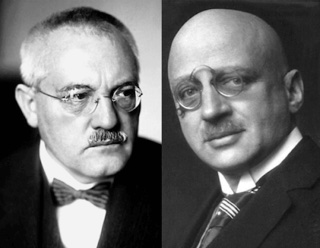Summary | Excerpt | Reviews | Beyond the Book | Read-Alikes | Genres & Themes | Author Bio

How Our Planet Came to Life
by Ferris JabrThis article relates to Becoming Earth
 As Ferris Jabr describes in Becoming Earth: How Our Planet Came to Life, he and his spouse discovered an all-too-common problem when they tried to plant a new garden—ruined, lifeless soil. Despite our millions of acres of farmland, the intensity of modern agriculture, grazing, deforestation, and land disturbance have severely depleted soils and the nutrients they contain that support crop growth. Jabr quotes a 2021 study that revealed that "about one third of agricultural land across the Corn Belt in the United States has already lost all of its topsoil."
As Ferris Jabr describes in Becoming Earth: How Our Planet Came to Life, he and his spouse discovered an all-too-common problem when they tried to plant a new garden—ruined, lifeless soil. Despite our millions of acres of farmland, the intensity of modern agriculture, grazing, deforestation, and land disturbance have severely depleted soils and the nutrients they contain that support crop growth. Jabr quotes a 2021 study that revealed that "about one third of agricultural land across the Corn Belt in the United States has already lost all of its topsoil."
This isn't a new problem, however; agriculture is thousands of years old, and by the 19th century, farmers were using a variety of fertilizer to replenish soils. These included bat guano and saltpeter because they provided nitrogen, an essential element that plants need to grow.
Nitrogen is abundant in Earth's atmosphere, but it must be converted to molecules that plants can take up through their roots. Bacteria and microorganisms in soil can do this, and manure naturally contains nitrogen. As guano and other fertilizers were limited in supply, countries, including Germany and Great Britain, started to fear large-scale famines would occur if new fertilizers weren't invented.
In the early 20th century, German scientists Fritz Haber and Carl Bosch perfected the process of creating ammonia, a nitrogen-hydrogen molecule that provides plants with the nitrogen they need. By using extreme heat and pressure and finding suitable catalysts, they and their team were able to scale up industrial-level production of ammonia, which was used not only as fertilizer but also as chemical weapons and explosives in World War I. "The Haber-Bosch process, as it became known, is now regarded as one of the most important industrial processes ever developed," Jabr writes.
Following World War II, ammonia was primarily used as a fertilizer, and along with crop breeding improvements, it sparked the Green Revolution, which prevented widespread famine and supported Earth's growing population. Today, in fact, half of the world's population depends on food produced with synthetic fertilizers.
But this advancement hasn't been without costs. Manufacturing ammonia burns huge amounts of fossil fuels because of the heat and pressure required. Ammonia production alone makes up between one and two percent of all CO2 emissions.
The excessive use of fertilizers also damages land and water resources. When nitrogen-rich fertilizers run off into rivers, lakes, and oceans, they cause the plant life in those bodies of water to grow, just like any other plant. Those algae and aquatic plants die, and microorganisms break them down and deplete the oxygen present in the water. This means fish and other organisms die because of a lack of oxygen. Algal blooms cause dead zones in bodies of water, including the 6,500-square-mile dead zone in the Gulf of Mexico where nutrient pollution from the Mississippi River basin meets the ocean.
The synthesis of ammonia and the resulting Green Revolution were undoubtedly positive innovations for the world's population. But as we now contend with the consequences of the Haber-Bosch process, it's vital to seek out different solutions for soil health—ones that don't require intensive fossil fuel usage or cause significant environmental damage.
Haber himself noted as much in his Nobel Prize speech in 1920, as he spoke about humanity's need for better ways to improve agriculture: "Nature, with her sophisticated forms of the chemistry of living matter, still understands and utilizes methods which we do not as yet know how to imitate."
Filed under Nature and the Environment
![]() This "beyond the book article" relates to Becoming Earth. It originally ran in August 2024 and has been updated for the
April 2025 paperback edition.
Go to magazine.
This "beyond the book article" relates to Becoming Earth. It originally ran in August 2024 and has been updated for the
April 2025 paperback edition.
Go to magazine.
Your guide toexceptional books
BookBrowse seeks out and recommends the best in contemporary fiction and nonfiction—books that not only engage and entertain but also deepen our understanding of ourselves and the world around us.